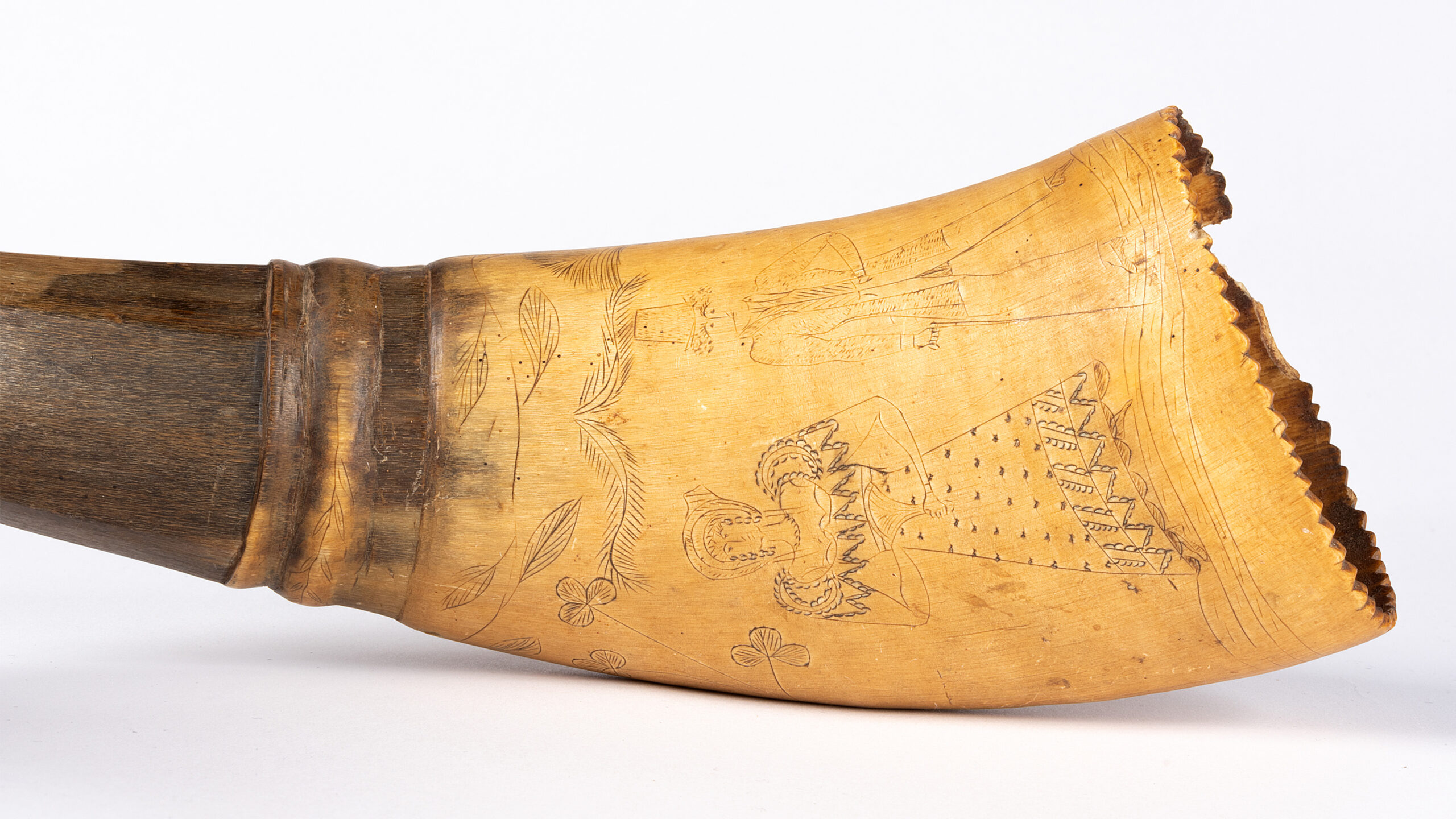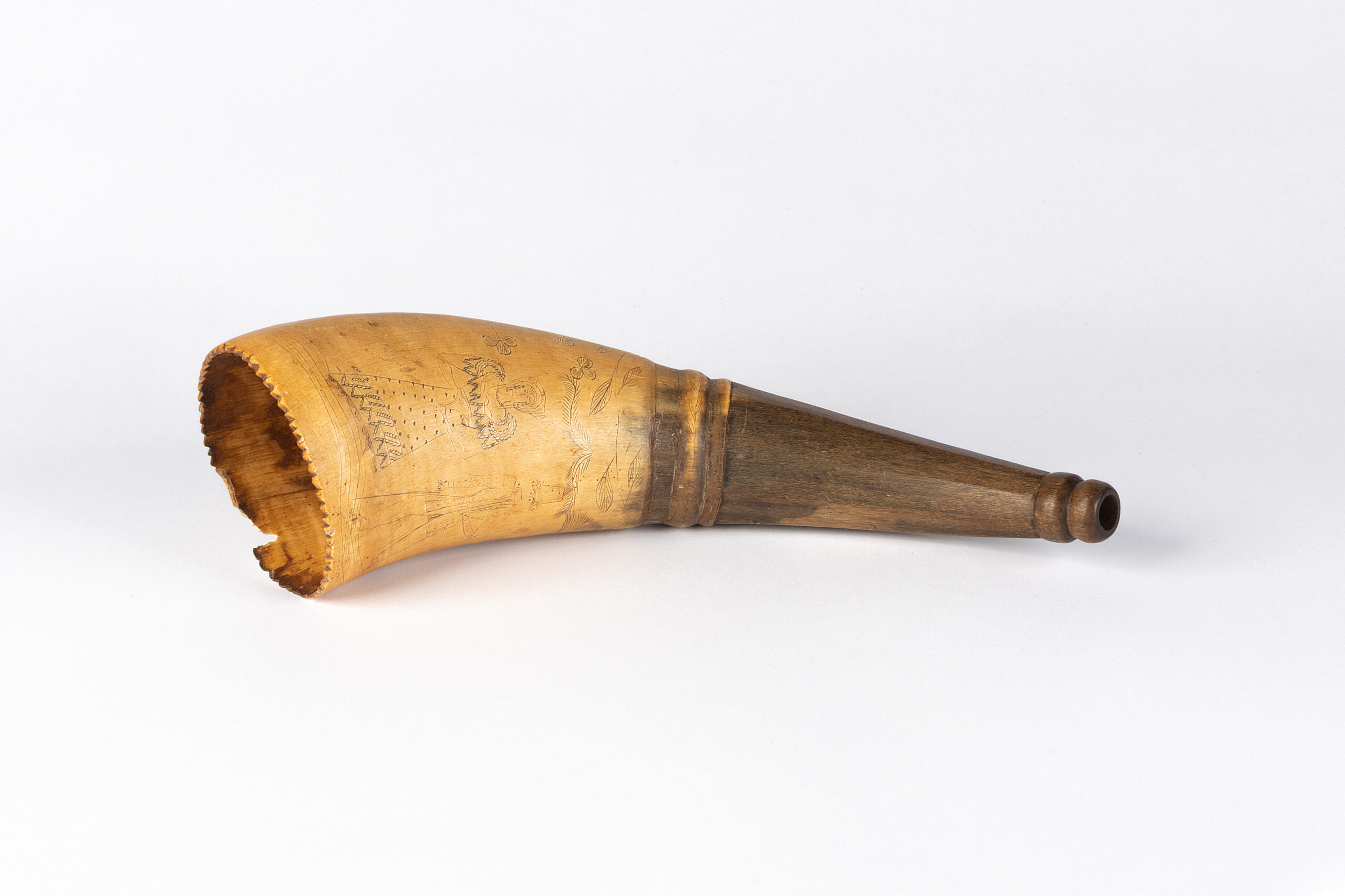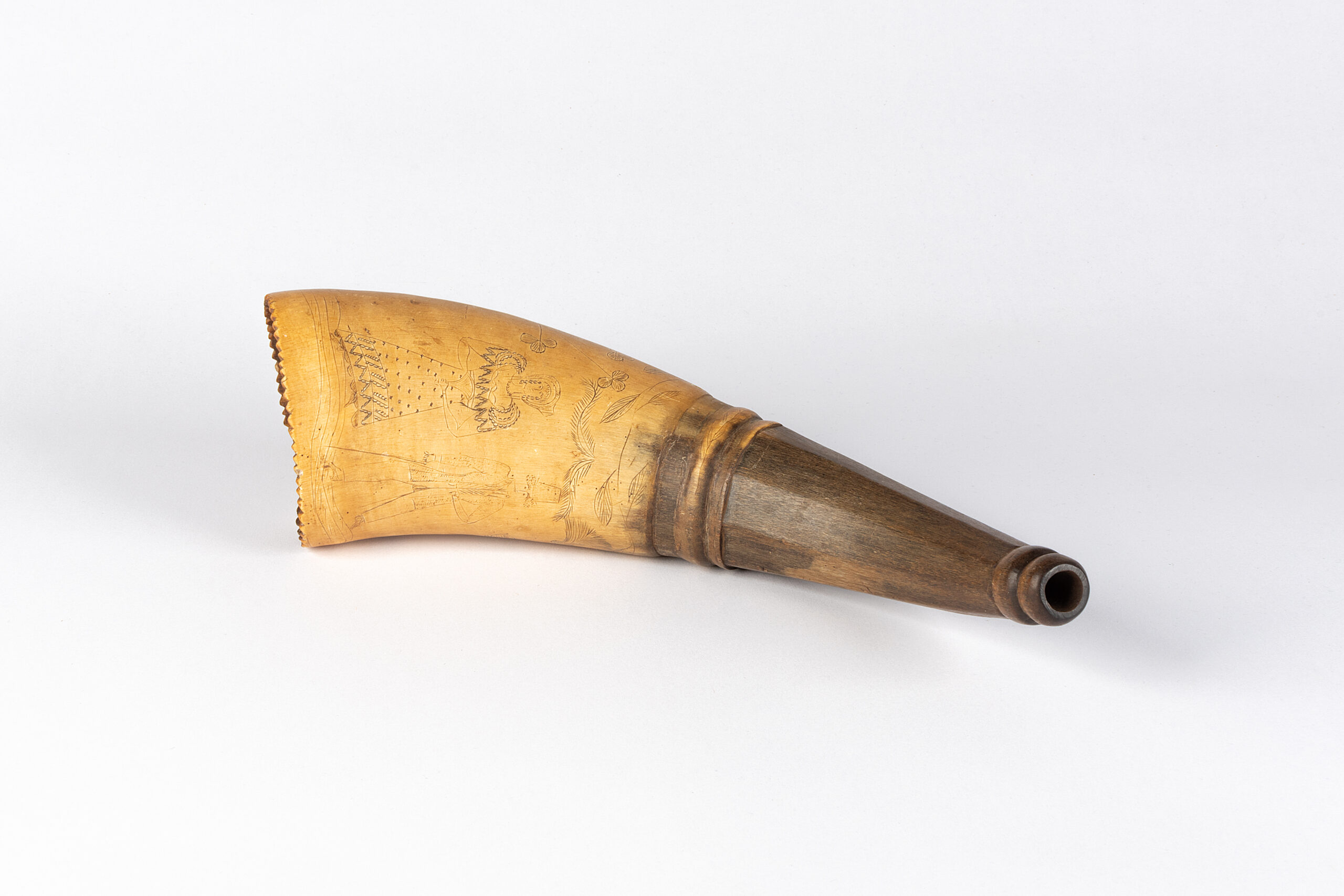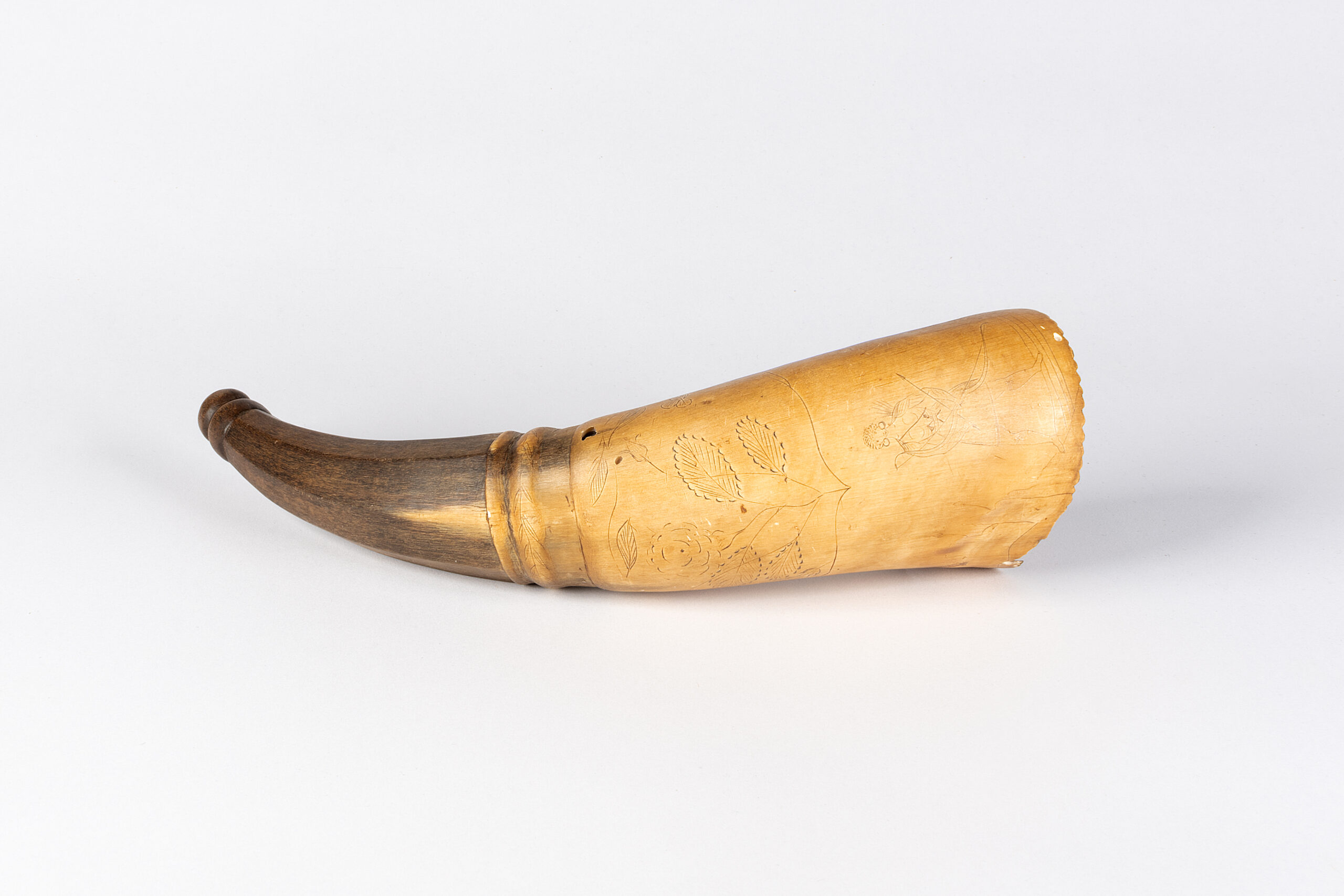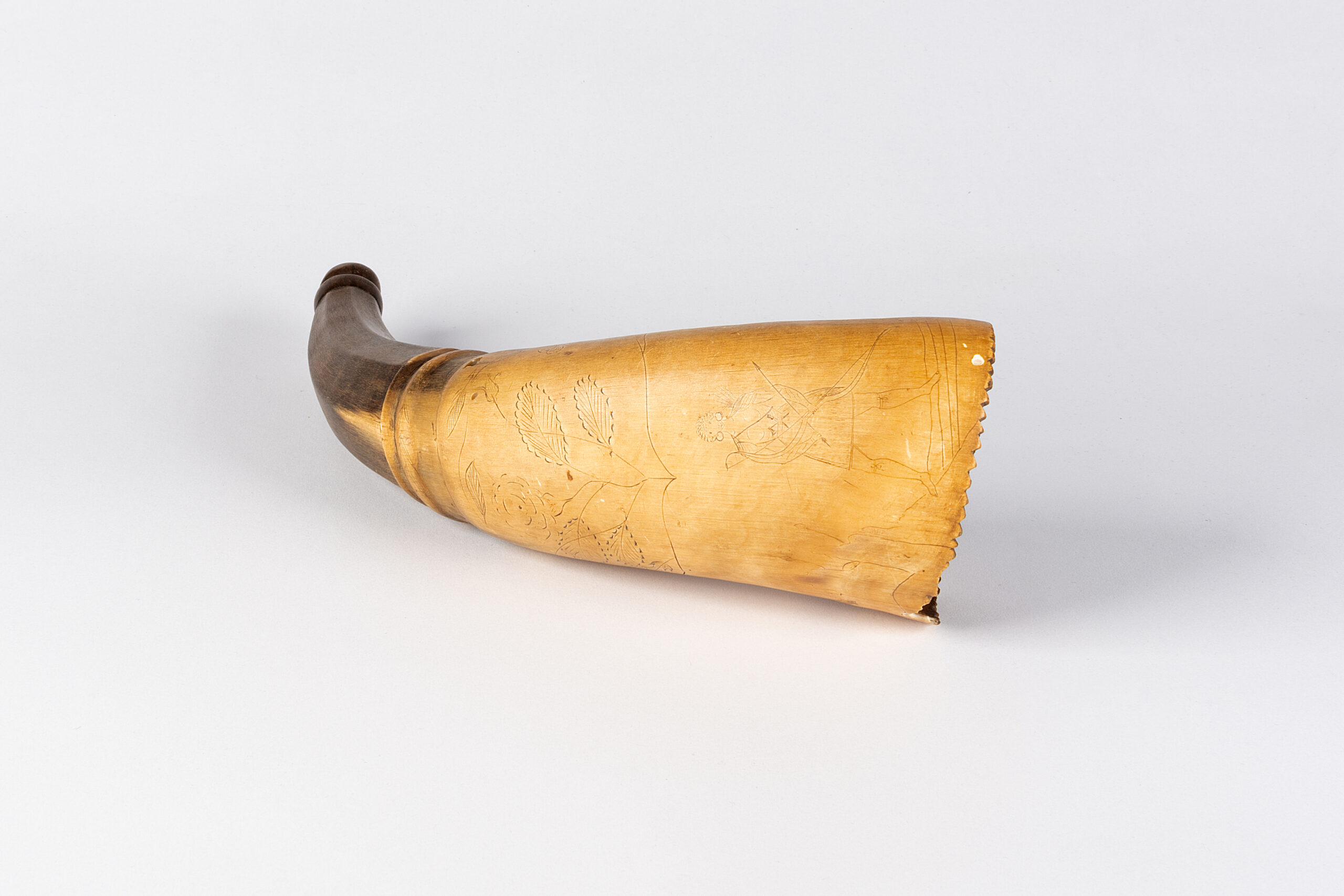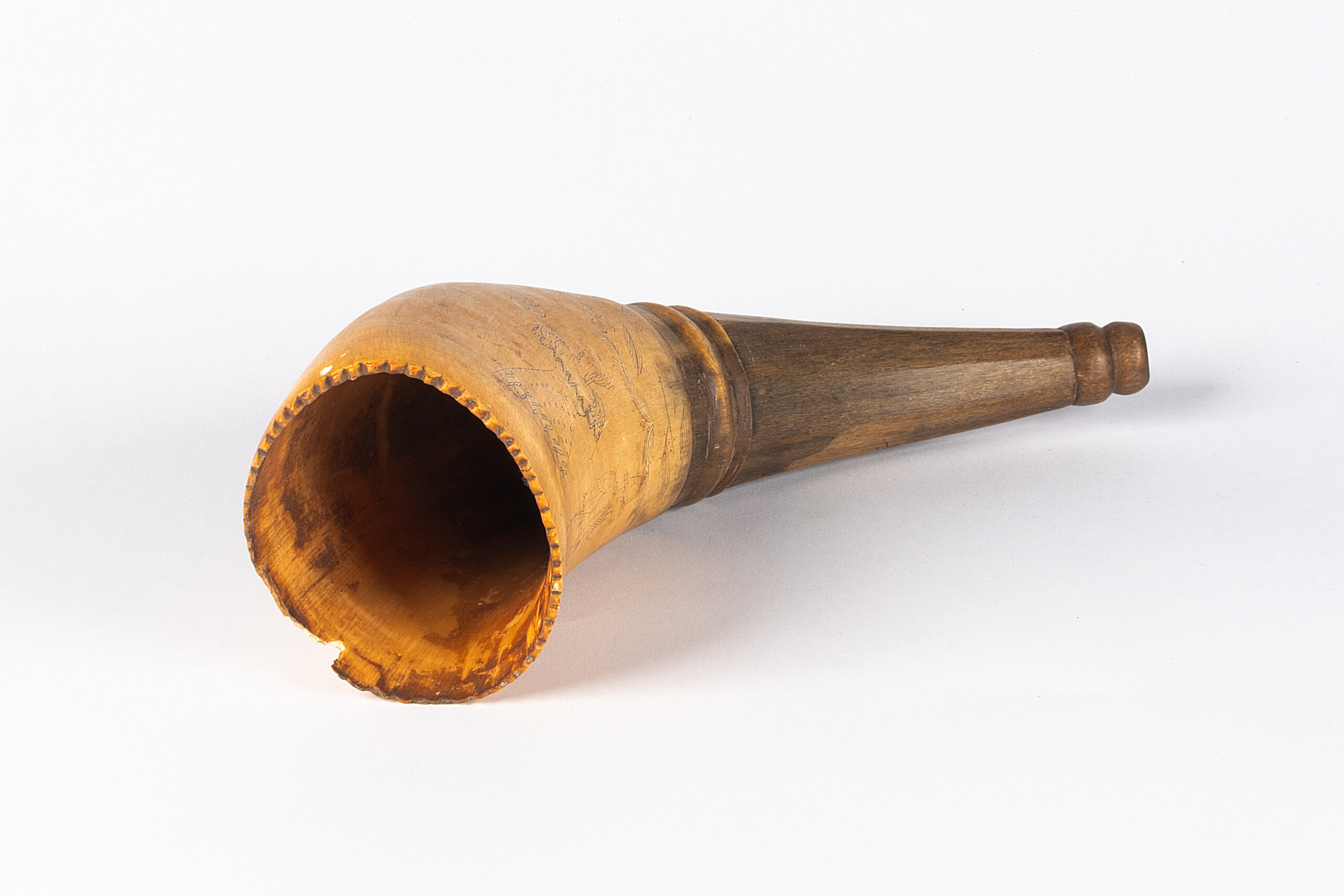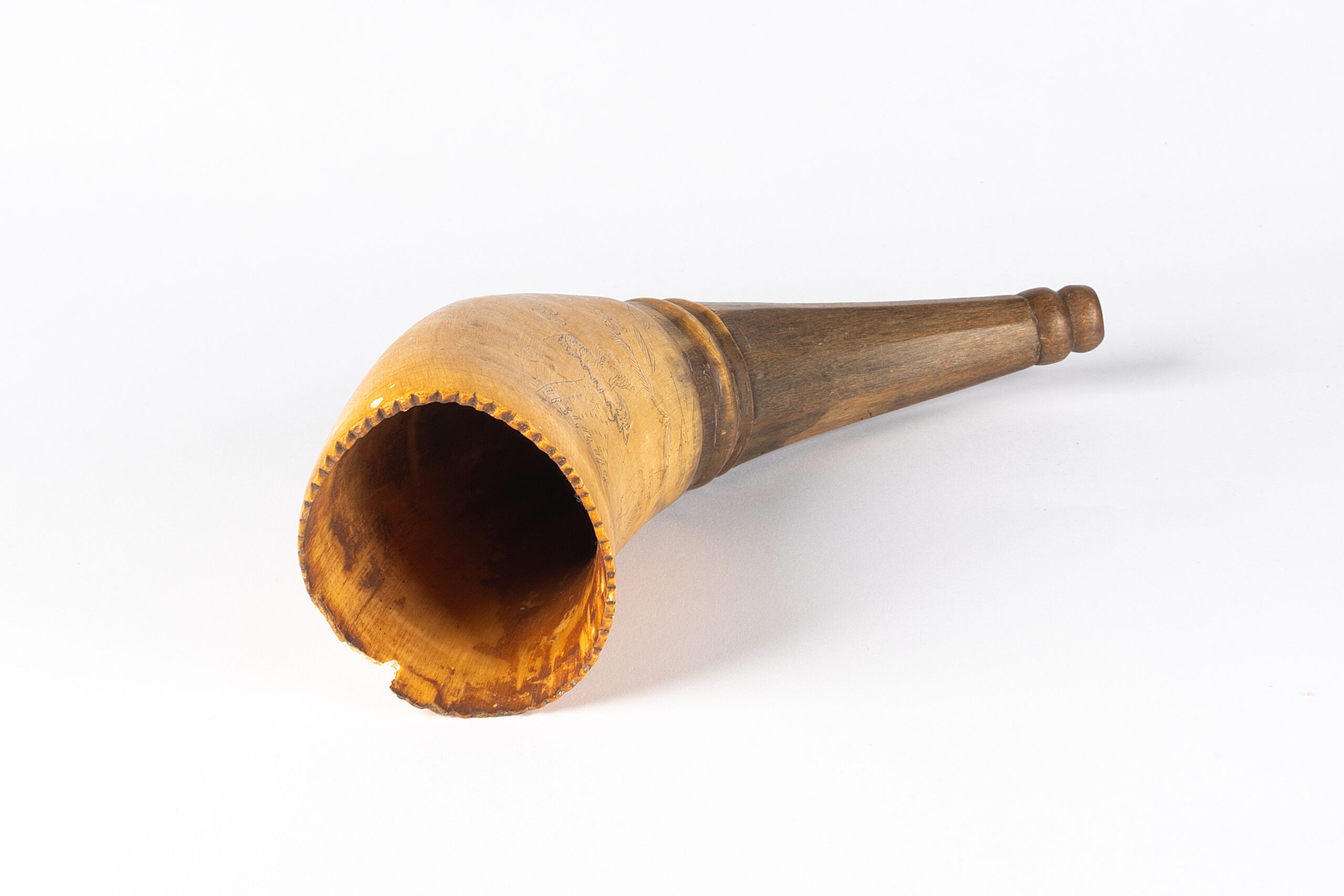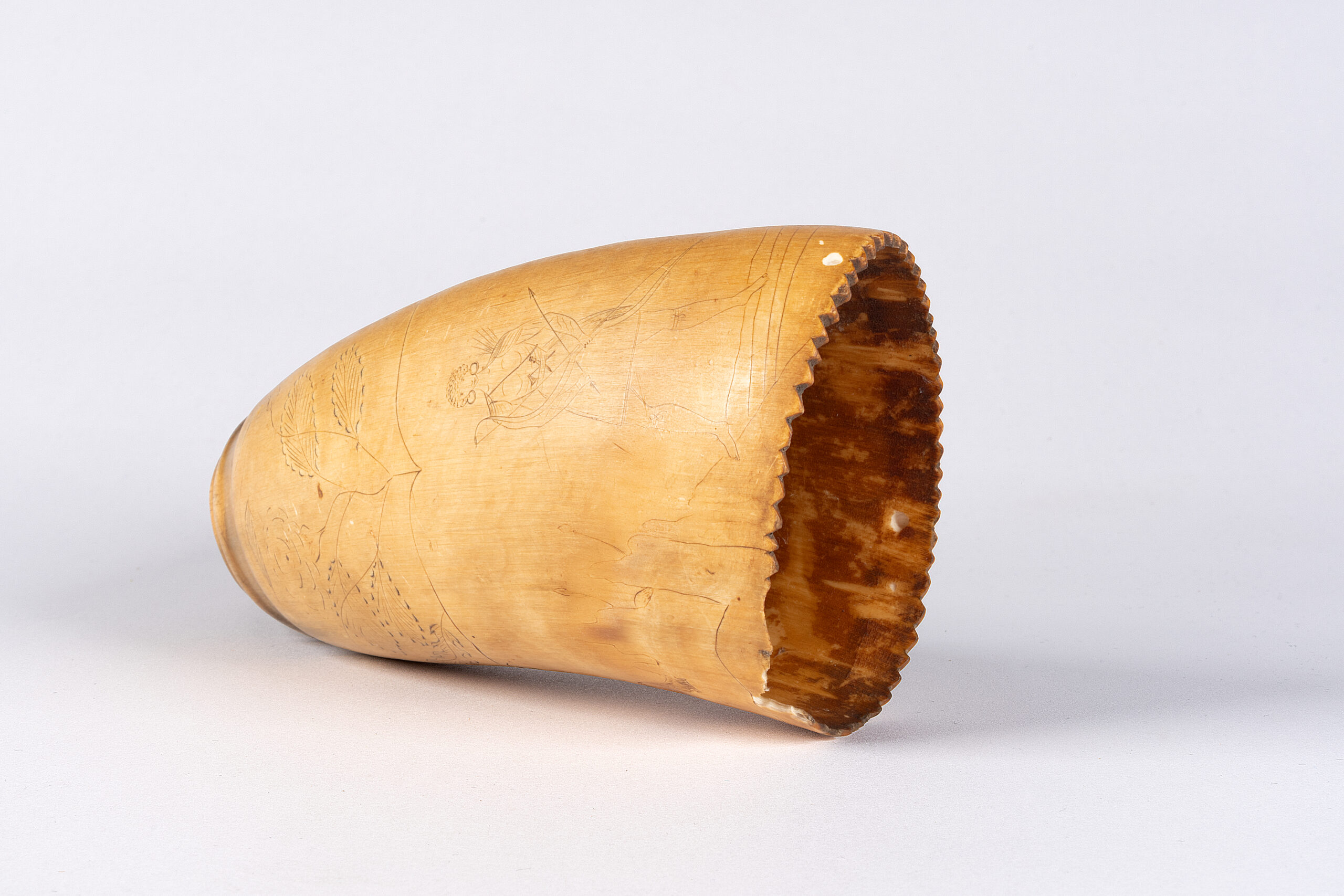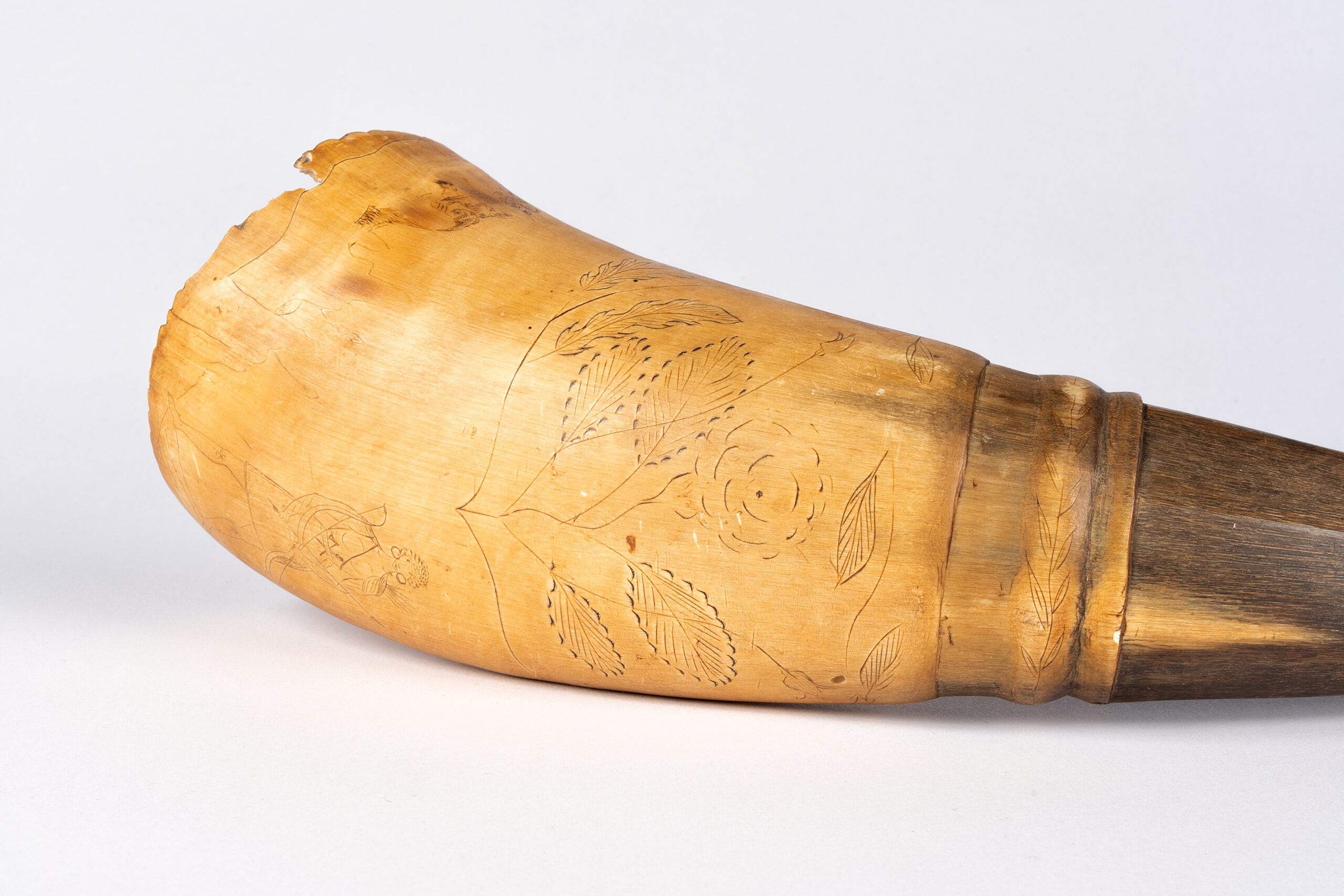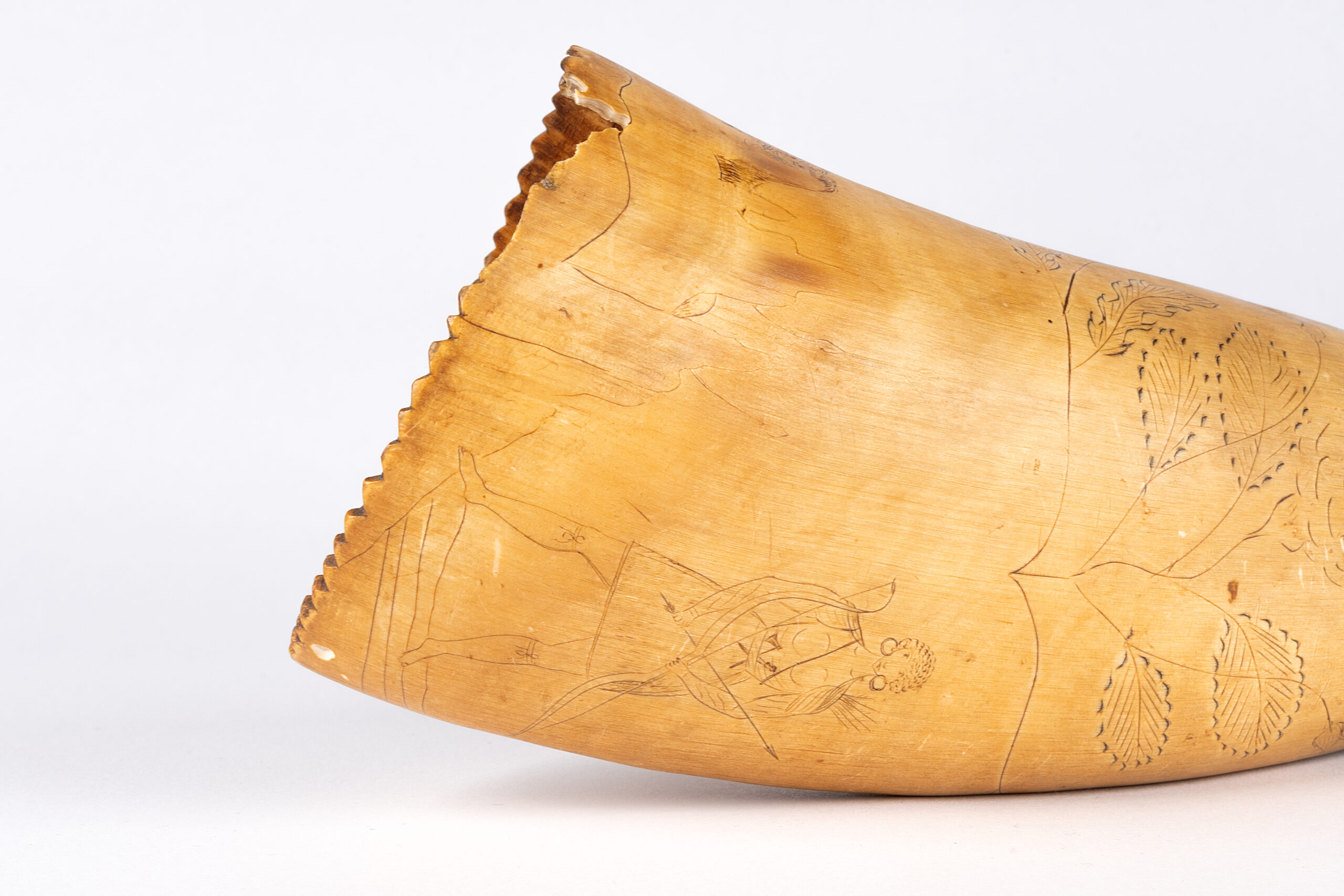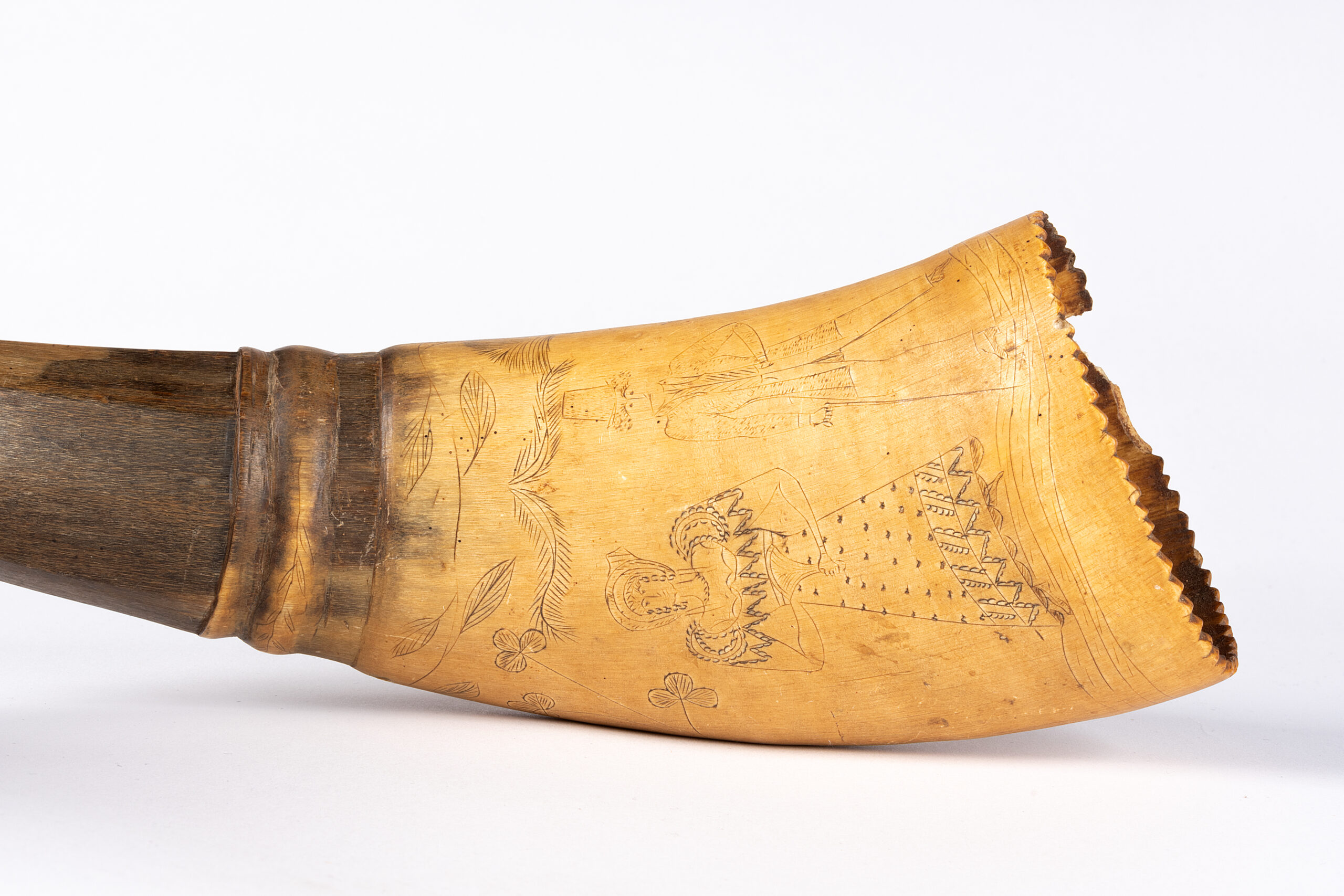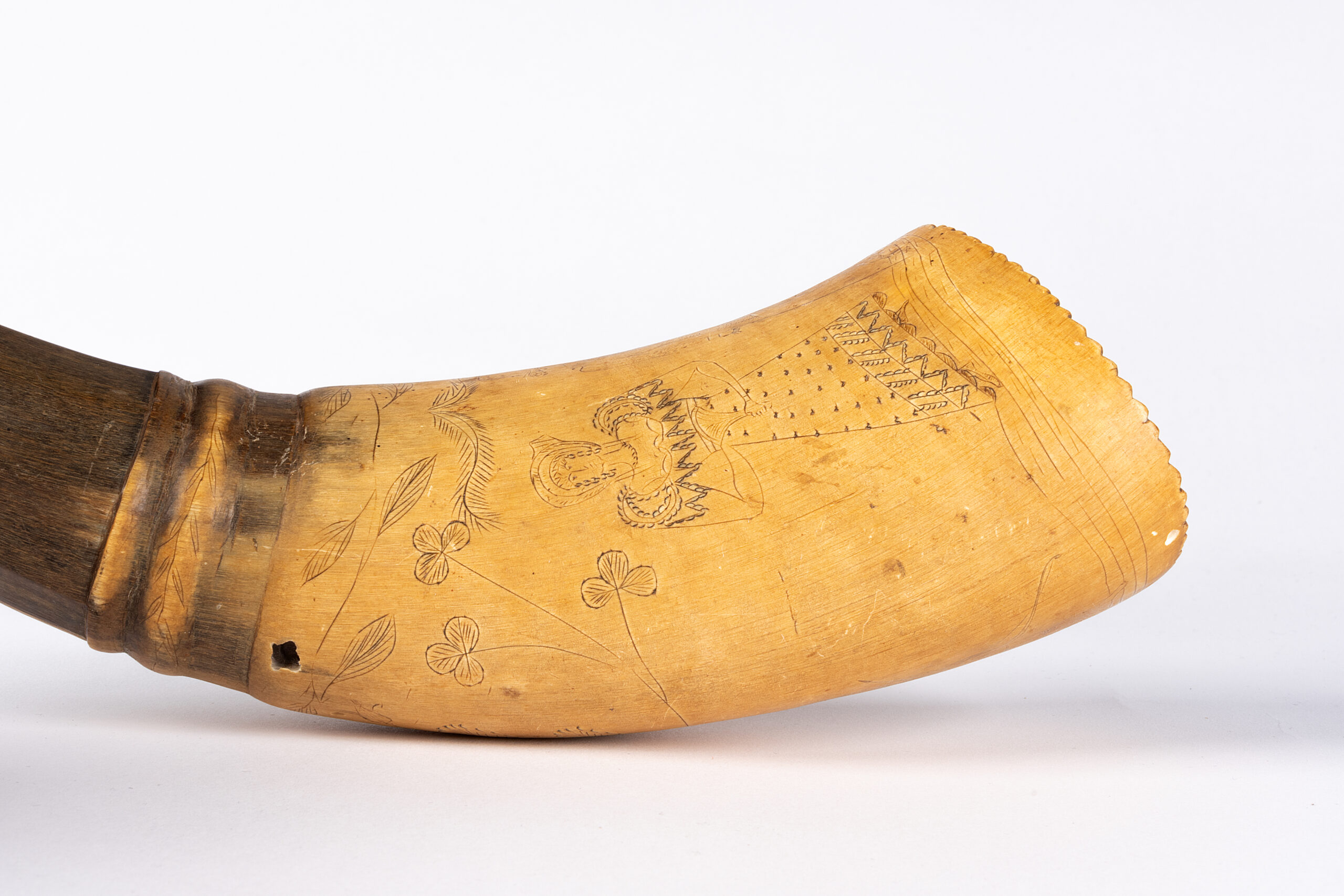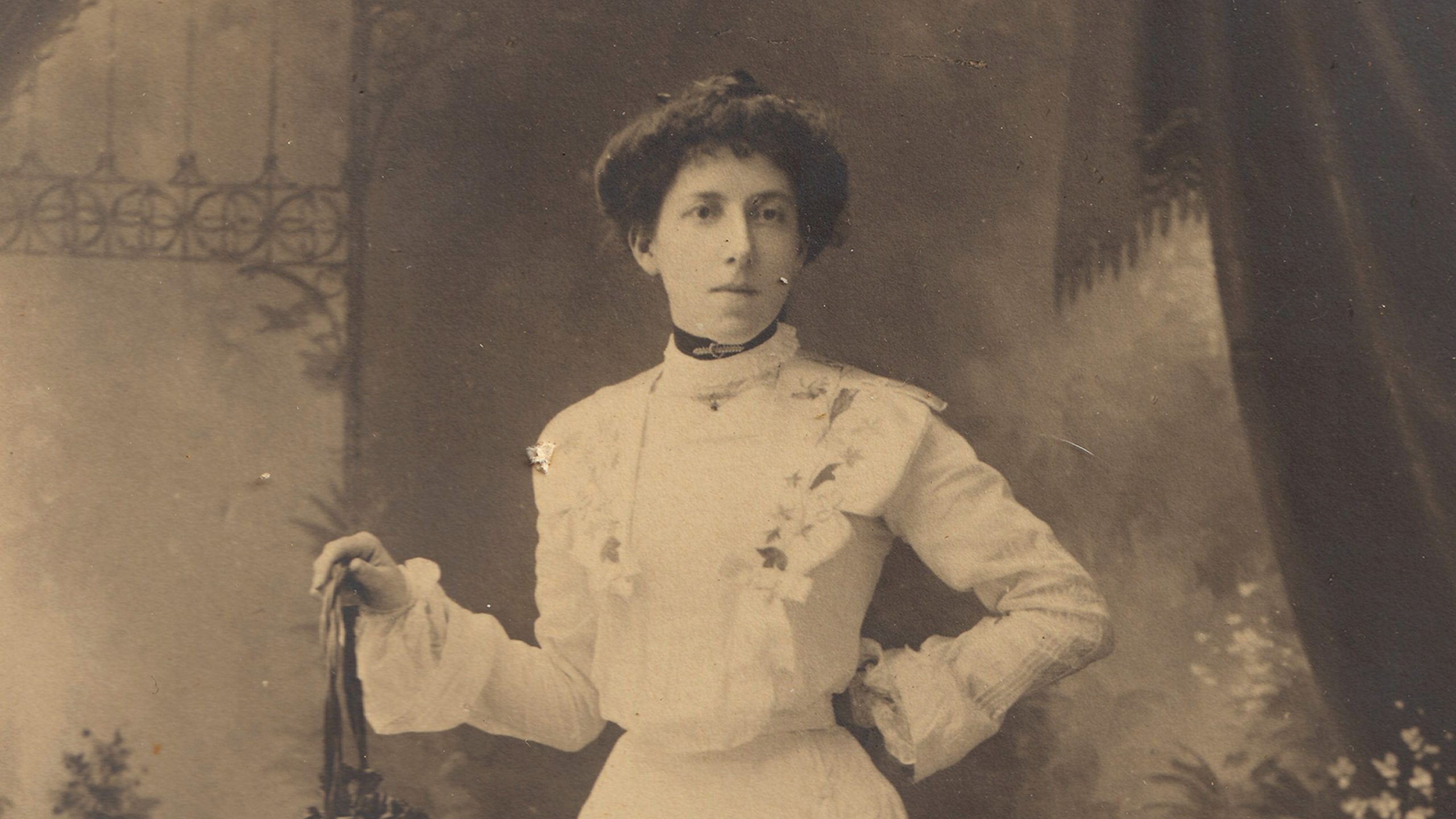Sounding Off
The Horn That Marked the Day's End
Nobody knows who made this horn, or when, but it’s believed to have sounded the daily knock-off at Colin Ross’s general store and flour mill in Inverell. Horn bugles can be blown with pursed lips like a trumpet to produce a single note that can resonate over quite a distance.
The horn is decorated with scrimshaw, a technique of carving pictures into ivory or bone for decoration. Sailors often practised scrimshaw to pass the time, especially on whaling boats where they had a ready supply of whalebone. Their intricate and painstaking designs told stories from their lives, depicting scenes of their everyday doings and the places they visited.
This horn may have come from one of the bullocks that fed and rested at the teamster’s camps on the banks of the Macintyre River, on Kamilaroi country, opposite Ross’s store and mill. It features three charming figures – a man and a woman dressed in the fashions of the 1820s, and an archer with a double bow. The archer may represent a hunter, alluding to the tradition of sounding a bugle during the hunt. The horn is sparsely decorated with English rose and Irish shamrock motifs; interestingly, there is no thistle or any reference to the Scottish ancestry of Ross (1821-1882), who was one of the first colonial settlers in the district.
Ross was born in Scotland in 1821 and married Mary Rosanna Brown in NSW in 1851. He built his store, post office and flour mill at a crossing on the Macintyre River in 1853, and was instrumental in establishing the town of Inverell. He retired in 1879, dying three years later. A Coles supermarket now stands where his store and mill stood, and the horn has lain silent for decades.


